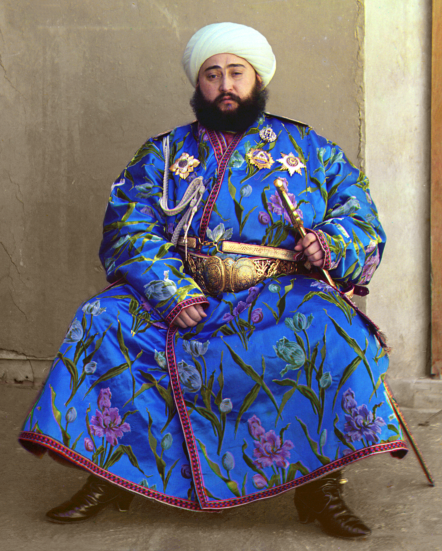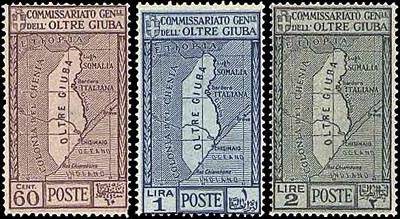|
Chakram
Chakram ( sa, , script=latn; pa, , script=latn) is a throwing weapon from the Indian subcontinent. One of its major purposes is to protect the turban and the head from sword/melee attacks. It is circular with a sharpened outer edge and a diameter of . It is also known as chalikar meaning "circle", and was sometimes referred to in English writings as a "war-quoit". The Chakram is primarily a throwing weapon but can also be used hand-to-hand. A smaller variant called ''chakri'' is worn on the wrist. A related weapon is the ''chakri dong'', a bamboo staff with a chakri attached at one end. History The earliest references to the chakram come from the 5th century BCE Indian epics ''Mahabharata'' and ''Ramayana'' where the Sudarshana Chakra is the weapon of the god Vishnu. Contemporaneous Tamil poems from the 2nd century BCE record it as ''thikiri'' (திகிரி). Chakra-dhāri ("chakram-wielder" or "disc-bearer") is a name for Krishna. The chakram was later used extensively b ... [...More Info...] [...Related Items...] OR: [Wikipedia] [Google] [Baidu] |
Nihangs
The Nihang or Akali (lit. "the immortals") is an armed Sikh warrior order originating in the Indian subcontinent. Nihang are believed to have originated either from Fateh Singh and the attire he wore or from the "Akali" (lit. Army of the Immortal) started by Guru Hargobind. Early Sikh military history was dominated by the Nihang, known for their victories where they were heavily outnumbered. Traditionally known for their bravery and ruthlessness in the battlefield, the Nihang once formed the irregular guerrilla squads of the armed forces of the Sikh Empire, the Sikh Khalsa Army. Akali The ''word Akali/akaali'' means timeless or immortal. Literally, one who belongs to ''Akaal'' (beyond Time). In other words, an Akaali is that person who is subject of none but God only. Conceptually speaking, the terms Akaali, Khalsa and Sikh are synonymous. The term Akaali was first used during the time of Guru Gobind Singh Sahib. The term Akaali became popular in the last decades of the ei ... [...More Info...] [...Related Items...] OR: [Wikipedia] [Google] [Baidu] |
The Warrior Princess
''Xena: Warrior Princess'' is an American fantasy television series filmed on location in New Zealand. The series aired in first-run syndication from September 4, 1995, to June 18, 2001. Critics have praised the series for its strong female protagonist, and it has acquired a strong cult following, attention in fandom, parody, and academia, and has influenced the direction of other television series. Writer-director-producer Robert Tapert created the series in 1995 under his production tag, Renaissance Pictures, with executive producers R. J. Stewart (who developed the series along with Tapert) and Sam Raimi. The series narrative follows Xena (played by Lucy Lawless), an infamous warrior on a quest to seek redemption for her past sins against the innocent by using her formidable fighting skills to now help those who are unable to defend themselves. Xena is accompanied by Gabrielle (played by Renee O'Connor), who during the series changes from a simple farm-girl into an Amazon war ... [...More Info...] [...Related Items...] OR: [Wikipedia] [Google] [Baidu] |
Indian Martial Arts
Indian martial arts refers to the fighting systems of the Indian subcontinent. A variety of terms are used for the English phrases “Indian martial arts”, deriving from ancient sources. While they may seem to imply specific disciplines (e.g. archery, armed combat), by Classical times they were used generically for all fighting systems. Among the most common terms today, '' śastra-vidyā'', is a compound of the words ' (weapon) and ' (knowledge). ''Dhanurveda'' derives from the words for bow (') and knowledge ('), the “science of archery” in Puranic literature, later applied to martial arts in general. The Vishnu Purana text describes dhanuveda as one of the traditional eighteen branches of “applied knowledge” or upaveda, along with ''shastrashastra'' or military science. A later term, ''yuddha kalā'', comes from the words ''yuddha'' meaning fight or combat and ''kalā'' meaning art or skill. The related term ''śastra kalā'' (lit. weapon art) usually refers specifi ... [...More Info...] [...Related Items...] OR: [Wikipedia] [Google] [Baidu] |
Turban
A turban (from Persian language, Persian دولبند, ''dulband''; via Middle French ''turbant'') is a type of headwear based on cloth winding. Featuring many variations, it is worn as customary headwear by people of various cultures. Communities with prominent turban-wearing traditions can be found in the Indian subcontinent, Southeast Asia, the Arabian Peninsula, the Middle East, the Balkans, the Caucasus, Central Asia, North Africa, West Africa, East Africa, and amongst some Turkic peoples in Russia as well as Ashkenazi Jews. A keski is a type of turban, a long piece of cloth roughly half the length of a traditional "single turban", but not cut and sewn to make a double-width "Double Turban" (or Double Patti). Wearing turbans is common among Sikh men, and infrequently women. They are also worn by Hindu monks. The headgear also serves as a religious observance, including among Shia Islam, Shia Muslims, who regard turban-wearing as ''Sunnah mu’akkadah'' (confirmed traditi ... [...More Info...] [...Related Items...] OR: [Wikipedia] [Google] [Baidu] |
Aerobie
An Aerobie is a flying ring used in a manner similar to a chakram or flying disc (Frisbee), for recreational catches between two or more individuals. Its ring shape of only about thickness"The Science of Aerobie Sport Toys", #1 , accessed June 26, 2008 makes the Aerobie lighter and more stable in flight than a disc. It can be bent to tune it for straighter flight. Since it has very low Drag (physics), drag and good stability, it can be thrown much farther than a flying disc. The Aerobie was used to set two former world records for thrown objects. Designed in 1984 by Stanford engineering lecturer Alan Adler, the Aerobie has a polycarbonate core with soft rubber bumpers molded onto the inner and outer rims. The outer rim has a Spoiler (aeronautics), spoiler designed to impart stability. History ...
|
Jubaland
Jubaland ( so, Jubbaland, ar, , it, Oltregiuba), the Juba Valley ( so, Dooxada Jubba) or Azania ( so, Asaaniya, ar, ), is a Federal Member State in southern Somalia. Its eastern border lies east of the Jubba River, stretching from Gedo to the Indian Ocean, while its western side flanks the North Eastern Province in Kenya, which was carved out of Jubaland during the colonial period. Jubaland has a total area of . As of 2005, it had a total population of 953,045 inhabitants. The territory consists of the Gedo, Lower Juba and Middle Juba provinces. Its largest city is Kismayo, which is situated on the coast near the mouth of the Jubba River. Bardera, Afmadow, Bu'aale, Luuq, Garbahareey and Beled Haawo are the region's other principal cities. During the Middle Ages, the influential Somali Ajuran Sultanate held sway over the territory, followed in turn by the Geledi Sultanate. They were later incorporated into British East Africa. In 1925, Jubaland was ceded to ... [...More Info...] [...Related Items...] OR: [Wikipedia] [Google] [Baidu] |
Torus
In geometry, a torus (plural tori, colloquially donut or doughnut) is a surface of revolution generated by revolving a circle in three-dimensional space about an axis that is coplanar with the circle. If the axis of revolution does not touch the circle, the surface has a ring shape and is called a torus of revolution. If the axis of revolution is tangent to the circle, the surface is a horn torus. If the axis of revolution passes twice through the circle, the surface is a spindle torus. If the axis of revolution passes through the center of the circle, the surface is a degenerate torus, a double-covered sphere. If the revolved curve is not a circle, the surface is called a '' toroid'', as in a square toroid. Real-world objects that approximate a torus of revolution include swim rings, inner tubes and ringette rings. Eyeglass lenses that combine spherical and cylindrical correction are toric lenses. A torus should not be confused with a ''solid torus'', which is form ... [...More Info...] [...Related Items...] OR: [Wikipedia] [Google] [Baidu] |
Mongol
The Mongols ( mn, Монголчууд, , , ; ; russian: Монголы) are an East Asian ethnic group native to Mongolia, Inner Mongolia in China and the Buryatia Republic of the Russian Federation. The Mongols are the principal member of the large family of Mongolic peoples. The Oirats in Western Mongolia as well as the Buryats and Kalmyks of Russia are classified either as distinct ethno-linguistic groups or subgroups of Mongols. The Mongols are bound together by a common heritage and ethnic identity. Their indigenous dialects are collectively known as the Mongolian language. The ancestors of the modern-day Mongols are referred to as Proto-Mongols. Definition Broadly defined, the term includes the Mongols proper (also known as the Khalkha Mongols), Buryats, Oirats, the Kalmyk people and the Southern Mongols. The latter comprises the Abaga Mongols, Abaganar, Aohans, Baarins, Chahars, Eastern Dorbets, Gorlos Mongols, Jalaids, Jaruud, Kharchins, Khishigt ... [...More Info...] [...Related Items...] OR: [Wikipedia] [Google] [Baidu] |
Akali Turban With Quoits
Akali may refer to: * In the context of Sikhism, "Akali" ("pertaining to Akal or the Supreme Power", "divine") may refer to: ** any member of the Khalsa, i.e. the collective body of baptized Sikhs ** a member of the Akali movement (1919-1925) ** a politician of the Akali Dal political parties ** a term for the Nihang, a Sikh order * Akali (''League of Legends''), the Rogue Assassin, a playable character in the video game ''League of Legends'' and its associated virtual band K/DA See also * Alkali (other) Alkali is a specific type of chemical base. Alkali may refer to: Places * Alkali, Nevada, United States, a ghost town * Alkali Lake (other) * An island in Lake Abaya, Ethiopia People * Ibrahim Alkali (born 1940), Nigerian air commo ... * Akari (other) {{disambiguation ... [...More Info...] [...Related Items...] OR: [Wikipedia] [Google] [Baidu] |
Society For Creative Anachronism
The Society for Creative Anachronism (SCA) is an international living history group with the aim of studying and recreating mainly Medieval European cultures and their histories before the 17th century. A quip often used within the SCA describes it as a group devoted to the Middle Ages "as they ought to have been", choosing to "selectively recreate the culture, choosing elements of the culture that interest and attract us". Founded in 1966, the non-profit educational corporation has over 20,000 paid members as of 2020 with about 60,000 total participants in the society (including members and non-member participants). History The SCA's roots can be traced to a backyard party of a UC Berkeley medieval studies graduate, the author Diana Paxson, in Berkeley, California, on May Day in 1966. The party began with a "Grand Tournament" in which the participants wore helmets, fencing masks, and usually some semblance of a costume, and sparred with each other using weapons such as plywood ... [...More Info...] [...Related Items...] OR: [Wikipedia] [Google] [Baidu] |
Tibet
Tibet (; ''Böd''; ) is a region in East Asia, covering much of the Tibetan Plateau and spanning about . It is the traditional homeland of the Tibetan people. Also resident on the plateau are some other ethnic groups such as Monpa people, Monpa, Tamang people, Tamang, Qiang people, Qiang, Sherpa people, Sherpa and Lhoba peoples and now also considerable numbers of Han Chinese and Hui people, Hui settlers. Since Annexation of Tibet by the People's Republic of China, 1951, the entire plateau has been under the administration of the People's Republic of China, a major portion in the Tibet Autonomous Region, and other portions in the Qinghai and Sichuan provinces. Tibet is the highest region on Earth, with an average elevation of . Located in the Himalayas, the highest elevation in Tibet is Mount Everest, Earth's highest mountain, rising 8,848.86 m (29,032 ft) above sea level. The Tibetan Empire emerged in the 7th century. At its height in the 9th century, the Tibet ... [...More Info...] [...Related Items...] OR: [Wikipedia] [Google] [Baidu] |


.jpg)




